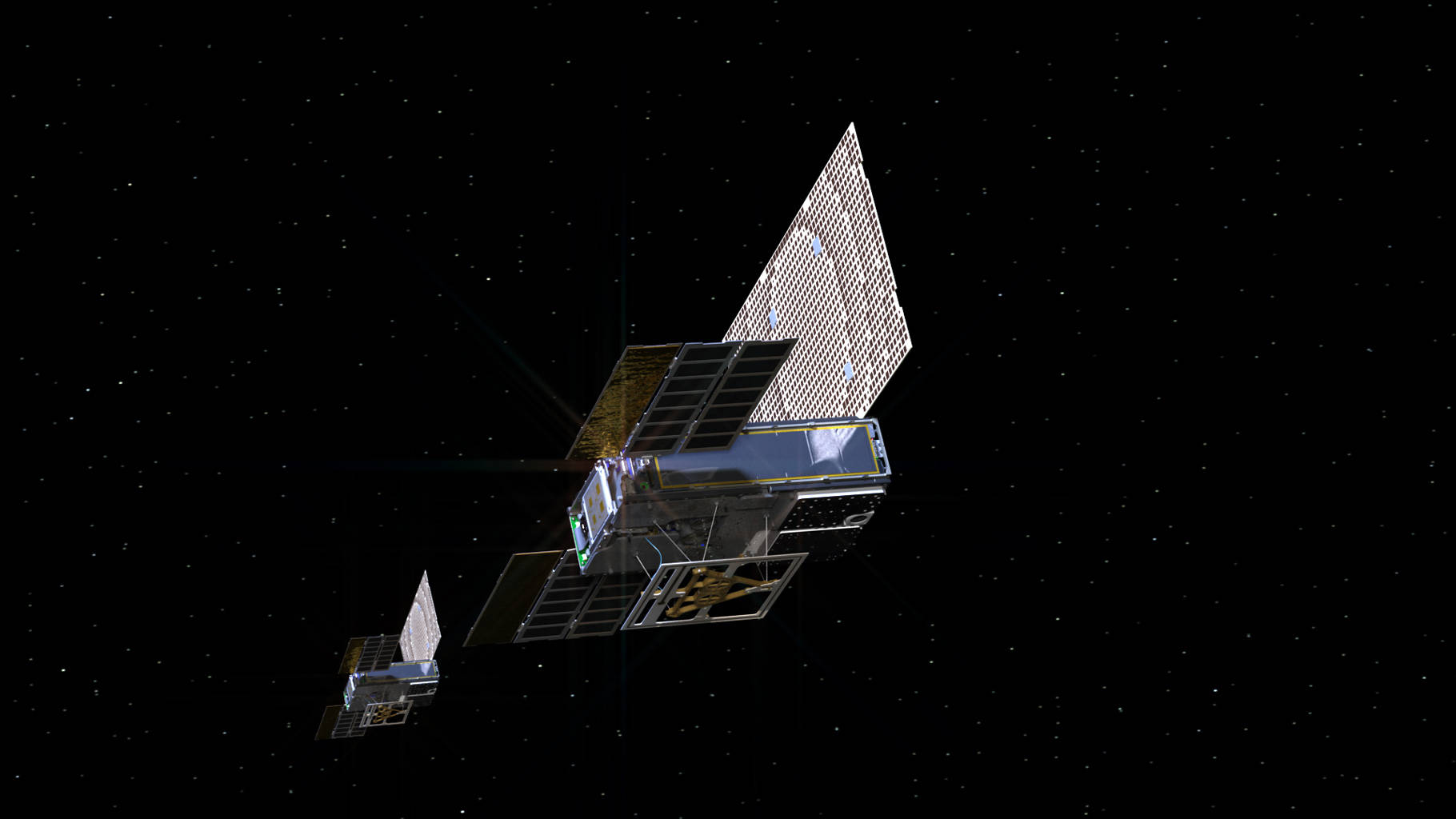UK University Gets £5M To Strap Lasers To CubeSats

The UK's Northumbria University is working on a laser communication device for small satellites that will pave the way for Britain's first university-led multi-satellite space mission.
The education institute has been granted a £5 million ($6.5 million) award from the UK Space Agency to develop a new laser-based optical satellite communications system designed with miniature CubeSats in mind. If all goes well, the technology will be ready for launch in 2025.
Lasers for drone communications are marvelous – almost impossible to jam, and very hard to detect, so the military are very interested in getting directional lasers onto drones
Scientists at the university's Space Technology Laboratory have been working with partners such as Durham University, satellite comms specialists e2E, and SMS Electronics to develop the project, and have now been joined by global aerospace company Lockheed Martin, which will be leading the system's engineering development.
The university said that thanks to existing funding, it has been able to establish the working principles for a prototype of a compact, high-speed inter-satellite laser optical communication device.
Lasers can transmit 1,000 times more data per second than using radio channels and because they are highly directional, it is also possible to transmit much more securely. It is hoped that such laser-based devices will become the predominant communications mechanism for satellites in future.
Professor Robert Wicks, head of the Space Technology Laboratory, said that the team is now ready for the next stage to build and test of a pair of prototype CubeSats that will be ready to launch to space in 2025, "but will also be ready for sale as the UK's first commercially available laser communication device for small satellites."
Gartner VP analyst Bill Ray told us that there are already various laser systems already in use for communications between orbiting satellites, but that existing systems are pretty heavy.
- Japan schedules August launch for 'Moon Sniper' lander
- Uncle Sam wants DEF CON hackers to pwn this Moonlighter satellite in space
- After network glitch, South Korea's commercial sat-slinger succeeds
- NASA freezes ice-hunting cubesat Moon mission for good after thruster fail
"Tesat's system is 56kg, with the moving mirrors and so forth, so if they can make something smaller and lighter, then there will be a good market for it, and not just in satellites," Ray said. "Lasers for drone communications are marvelous – almost impossible to jam, and very hard to detect, so the military are very interested in getting directional lasers onto drones," he added.
Meanwhile, other things are afoot in the satellite industry. The European Space Agency (ESA) and mobile network body the GSMA this week signed a Memorandum of Intent (MOI) to work together on integrating satellite communications with 5G and future 6G networks.
Key to this will apparently be the GSMA Foundry, which focuses on new technology projects. It will work with ESA's 5G/6G Hub based in Oxfordshire on how to integrate 5G and 6G communications with non-terrestrial networks.
It isn't entirely clear what form this integration will take, but there is already some support for non-terrestrial networks integrated into handsets already on sale.
"Collaboration is key to telecommunications innovation," said ESA's Head of Space for 5G and 6G Strategic Program, Antonio Franchi, adding: "We look forward to working with GSMA to explore and realize the huge potential of next-generation satellite-enabled connectivity." ®
From Chip War To Cloud War: The Next Frontier In Global Tech Competition
The global chip war, characterized by intense competition among nations and corporations for supremacy in semiconductor ... Read more
The High Stakes Of Tech Regulation: Security Risks And Market Dynamics
The influence of tech giants in the global economy continues to grow, raising crucial questions about how to balance sec... Read more
The Tyranny Of Instagram Interiors: Why It's Time To Break Free From Algorithm-Driven Aesthetics
Instagram has become a dominant force in shaping interior design trends, offering a seemingly endless stream of inspirat... Read more
The Data Crunch In AI: Strategies For Sustainability
Exploring solutions to the imminent exhaustion of internet data for AI training.As the artificial intelligence (AI) indu... Read more
Google Abandons Four-Year Effort To Remove Cookies From Chrome Browser
After four years of dedicated effort, Google has decided to abandon its plan to remove third-party cookies from its Chro... Read more
LinkedIn Embraces AI And Gamification To Drive User Engagement And Revenue
In an effort to tackle slowing revenue growth and enhance user engagement, LinkedIn is turning to artificial intelligenc... Read more

